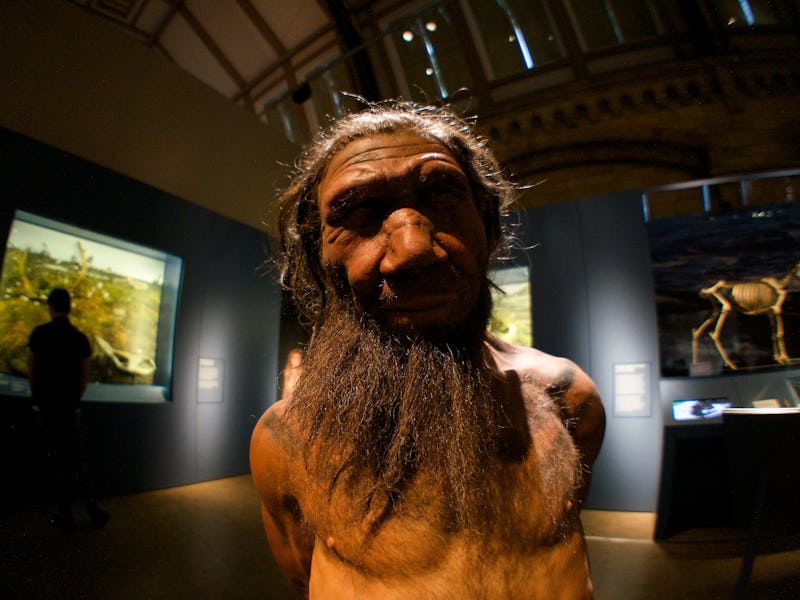Neanderthal Bone Scars Reshape What We Assume About Their Behavior
A hand grip can make all the difference when it comes to livelihood.

When Neanderthal fossils were found in 1856 the ancient hominins were quickly categorized as brutes whose intelligence was far less than Homo sapiens. In the past five years, a surge of research has allowed Neanderthals a much-deserved reputation makeover. A study released Wednesday in Science Advances further reshapes what we know about the lives of Neanderthals with its examination of a crucial part of their anatomy: their hands.
In the paper a team of Swiss and German scientists explain that previously it was accepted Neanderthals more often utilized power grasping rather than precise hand movements. That’s an important difference because how we use our hands reveals what we’ve done with our lives. However, that belief — which this team says was not substantiated with solid evidence — is contrary to the growing body of archeological evidence that shows Neanderthals were artistic craftsman capable of cultural expression.
Power grasping or gripping, is when an object is held in the palm of the hand and flexor tendons pull the fingers and thumb so an object can be grasped. It’s what you do when you throw, say, a stone. Today a power grip is something that people like bricklayers, stonemasons, and carpenters have to use. Meanwhile, in a precision grip, the thumb and the pointer finger work like tweezers and a hand can hold small and delicate objects. This is the grip that’s most commonly used by tailors, writers, painters, and shoemakers.
Using 3D scans, this team was able to prove that Neanderthals more often used precision grips, rather than power ones. To determine this, they scanned the hand bones of six Neanderthals and six modern humans who lived more than 40,000 years ago. They also scanned the hand bones that belonged to 45 19th-century skeletons collected at the Natural History Museum, Switzerland. These more modern skeletons were key because historians knew the profession of each of the humans they belonged to.
Two examples of precision grasping.
The scans are important because they allowed the scientists to search for entheses, or muscle attachment scars. These skeletal markers can provide direct anatomical evidence to how people used their muscles. Analysis of the Neanderthal entheses exposed that they habitually used small-sized tools and gripped in a way that allowed for delicate, yet a high level of, precision. In comparison, the modern skeletons that were once brute-force laborers had more prominent entheses on their thumb and pinky — revealing that they used a power grip. Neanderthals, meanwhile, had larger entheses on their thumbs and index fingers.
“Our findings establish a clear link between the biological and cultural remains of Neanderthals and challenge the common portrayal of Neanderthal manual behavior as relying on power and rarely performing tasks requiring precision,” the scientists write. “[The findings] establish a solid link between biological and cultural remains in the fossil record.”